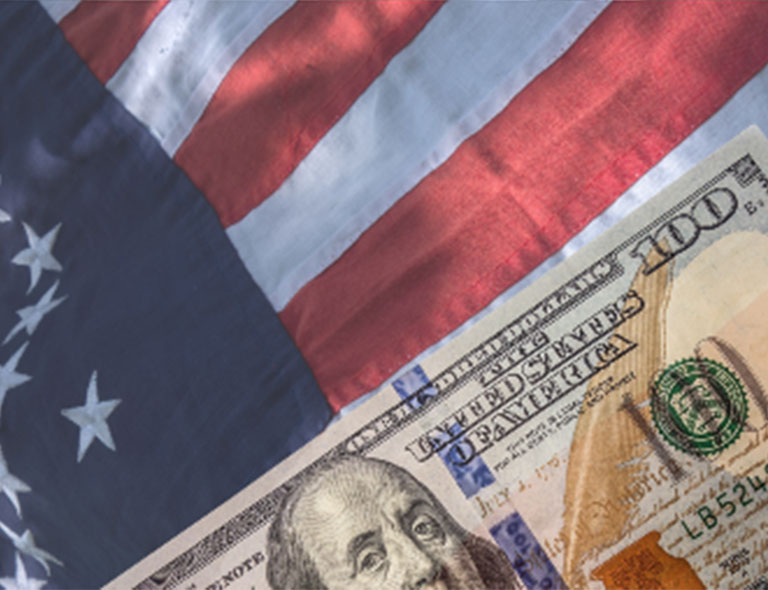The Unpredictable Rise and Fall of Cryptocurrencies
Bitcoin, along with other cryptocurrencies, has been on an upward tear since the COVID pandemic began. On January 1, 2020, bitcoin traded at $7,174.74. By April 15, 2021, its price had soared 783% to a (so far) all-time high of $63,346.79. Other leading cryptos such as ether enjoyed similar gains.
The Surge and the Setback: A Tale of Two Trends
That’s some serious dough. But sadly for crypto investors, the party didn’t last. Bitcoin’s price began faltering in late April 2021. Losses mounted after Tesla founder and crypto enthusiast Elon Musk announced the company would no longer accept payment in bitcoin for its vehicles.
Then on May 19, 2021, crypto prices dove off a cliff after the Chinese government announced it would prohibit financial institutions and payments platforms from providing any crypto-related services. While Chinese citizens can still legally own cryptos, the ban makes them much harder to use.
Free Wealth Protection Insights
Enter your email below to receive our weekly briefings on better ways to preserve your wealth, legally reduce your tax bill, and better protect what you’ve worked hard to build.
The Nestmann Group does not sell, rent or otherwise share your private details with third parties. Learn more about our privacy policy here.
PLEASE NOTE: This e-series will be delivered to you via email. You should receive your first message minutes after joining us. By signing up for this course, you’ll also start to receive our popular weekly publication, Nestmann’s Notes. If you don’t want to receive that, simply email  or click the unsubscribe link found in every message.
When news of China’s announcement reached investors, bitcoin’s price plummeted to 53% below its April 15, 2021 peak. At one point during trading hours on May 19, nearly $1 trillion was wiped off the market capitalization of the entire crypto sector. While bitcoin recovered about half that loss after some encouraging tweets from Tesla, the continued share price volatility is making crypto investors nervous.
The Role of Influencers and Institutional Doubts: Market Reactions
The Financial Times reported on “new doubts among institutional fund managers over the future of cryptocurrencies as an asset class.” A report from JPMorgan said that institutional investors, which only a few months ago appeared to be abandoning gold as a safe haven in favor of bitcoins, are now moving back to gold.
But not all crypto investors are nervous. In the midst of the market carnage, Cathie Wood, Chief Executive of Ark Investment Management, reiterated her $500,000 price forecast for bitcoin.
Of course, this isn’t the first example of extreme price volatility for bitcoin and other cryptos. Every time Elon Musk or another influencer announces they’re bullish on cryptos, prices soar and talking heads again parrot that crypto is winning mainstream acceptance. But when upward momentum stalls, the talking heads turn bearish.
Understanding the Broader Context: The Evolution of Cryptocurrency Volatility
As is the case with many things, the truth is probably somewhere in the middle. Even as price volatility lingers, mainstream acceptance of cryptos continues to grow. Indeed, on May 19, 2021 – the day cryptos had their most recent sharp price drop-off – banking giant Wells Fargo announced it would offer a crypto fund to its largest wealth management clients. Morgan Stanley and JPMorgan Chase have already announced plans to launch actively managed crypto funds for their managed portfolios.
Impact on the Stock Market and Economic Indicators
As well, in April 2021, Coinbase, America’s largest crypto exchange, began trading on the Nasdaq stock exchange. Its share price soared past its initial reference price of $380, rocketing to $429.54 before falling back.
Cryptocurrencies are not isolated from broader economic trends. It’s also important to view cryptos in the context of the broader market. There appears to be a broad rotation out of big tech and growth stocks in favor of shares better positioned to benefit from a recovering economy and (especially) inflation. It’s hardly a stretch to suggest that many of these investors are similarly taking profits in cryptos.
The Influence of Hype and Speculation: A Double-Edged Sword
Still, there’s more than a whiff of snake oil in the air when a single tweet by an influencer like Elon Musk can spook – or spike – the markets. Nor are we reassured by the spectacular price increases experienced by cryptos launched as a joke, such as Dogecoin. Then there’s a crypto called Simple Cool Automatic Money (SCAM), which earlier this month briefly reached a market cap of $70 million, before falling back to $800,000.
Regulatory Concerns: Government Stance and the Future of Cryptos
And don’t forget that Big Brother doesn’t approve of bitcoin and other cryptos with “distributed ledgers” that trade peer-to-peer, without a middleman. Governments don’t want us to have financial privacy. Nor do they want a distributed ledger ecosystem to exist that could potentially compete with fiat currencies. These are two of the reasons why China cracked down on cryptos, and why we’ll likely see similar measures taken in other countries, including the United States.
Governments and Stablecoins: The Future of Digital Currency Regulation
We’ve previously suggested that governments are much more interested in supporting cryptos linked to a fiat currency or a basket of fiat currencies – so-called “stablecoins.” Stablecoins offer central banks and governments the ability to maintain control, as these cryptos tied to fiat currency can inflate at will and be micro-managed. In April 2020, the Chinese Central Bank formally launched a digital renminbi. Similar initiatives are underway in many other countries.
Real-World Implications: Cryptos in Everyday Use
As cryptocurrencies face regulatory hurdles, their practical use in daily transactions becomes more challenging. Major companies like Tesla initially embraced bitcoin, only to step back due to environmental concerns and regulatory uncertainties. Such back-and-forth not only affects the market but also the viability of using cryptocurrencies for everyday purchases and investments.
The Future of Cryptocurrency as an Asset Class
With these developments in mind, we think it’s a bit early to classify bitcoin or other cryptos with distributed ledgers as their own asset class. Buy if you choose, but don’t be surprised if a combination of price volatility, stifling compliance rules, and government-backed stablecoins erode their popularity.
4 Reasons to Take Your Crypto Offshore
Discover how moving your crypto offshore gives you privacy, asset protection, and can even offer tax benefits.
Need Help?
We worked with our first “bitcoin millionaire” in 2016. Since then, we’ve helped plenty more.
If you’re thinking about moving your crypto offshore, or just wondering the best way to hold it, sell it, or pass it on to your heirs, feel free to book in a consultation with one of our Associates. They’ll explain how our planning works, see if it’s right for you, and answer your questions.
Can You Buy Bitcoin in a Roth IRA? Tax Advantages, Risks, and How to Do It Correctly
Learn if you can buy Bitcoin in a Roth IRA, the tax benefits, potential risks, and how to set it up correctly for your retirement. Learn more here: Can you buy bitcoin in a Roth IRA.



